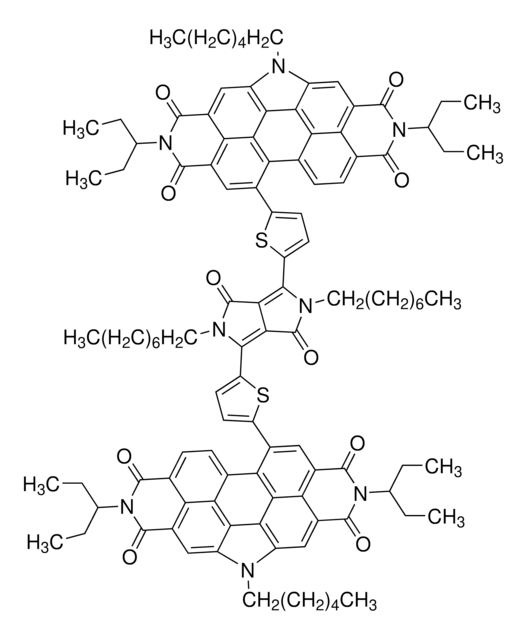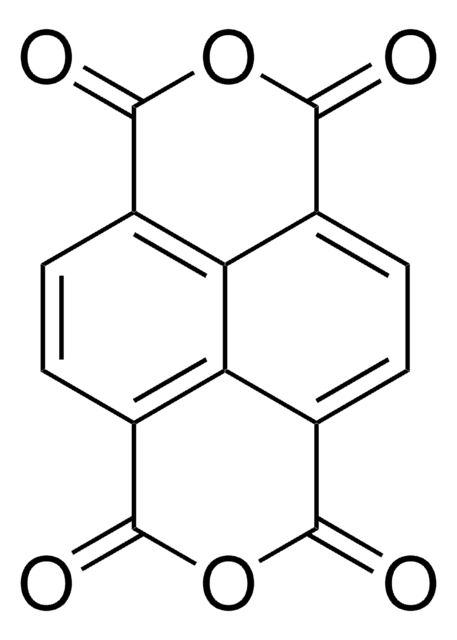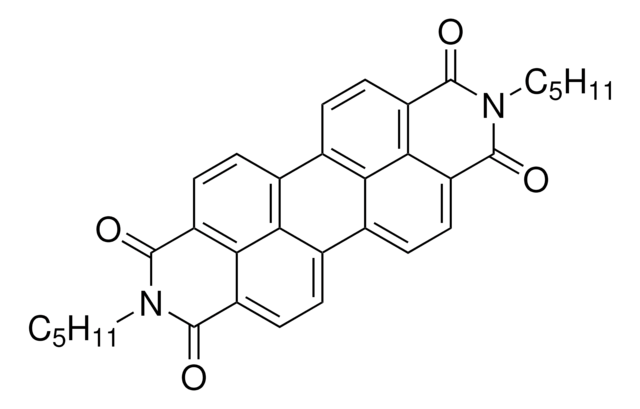915157
iPr-PDI
≥95%
Synonym(s):
N,N-Bis(2,6-diisopropylphenyl)perylene-3,4,9,10-bis(dicarboximide)
Sign Into View Organizational & Contract Pricing
All Photos(2)
About This Item
Empirical Formula (Hill Notation):
C48H42N2O4
CAS Number:
Molecular Weight:
710.86
UNSPSC Code:
12352101
NACRES:
NA.22
Recommended Products
Application
iPr-PDI is a perylene based organic photocatalyst with a variety of demonstrated uses, including the reduction of aryl halides and the iodoperfluoroalkylation of alkenes.
Product can be used with our line of photoreactors: Including Penn PhD (Z744035) & SynLED 2.0 (Z744080)
Product can be used with our line of photoreactors: Including Penn PhD (Z744035) & SynLED 2.0 (Z744080)
related product
Storage Class Code
11 - Combustible Solids
WGK
WGK 3
Flash Point(F)
Not applicable
Flash Point(C)
Not applicable
Certificates of Analysis (COA)
Search for Certificates of Analysis (COA) by entering the products Lot/Batch Number. Lot and Batch Numbers can be found on a product’s label following the words ‘Lot’ or ‘Batch’.
Already Own This Product?
Find documentation for the products that you have recently purchased in the Document Library.
Cristian Rosso et al.
Organic letters, 21(13), 5341-5345 (2019-06-30)
Two efficient continuous flow iodoperfluoroalkylation methods are described: using 0.05 mol % perylene diimide (PDI) photocatalyst under 450 nm irradiation or substoichiometric triethylamine under 405 nm irradiation. These methods enable dramatically elevated productivity versus batch processes. The triethylamine-mediated method is
Indrajit Ghosh et al.
Science (New York, N.Y.), 346(6210), 725-728 (2014-11-08)
Biological photosynthesis uses the energy of several visible light photons for the challenging oxidation of water, whereas chemical photocatalysis typically involves only single-photon excitation. Perylene bisimide is reduced by visible light photoinduced electron transfer (PET) to its stable and colored
Our team of scientists has experience in all areas of research including Life Science, Material Science, Chemical Synthesis, Chromatography, Analytical and many others.
Contact Technical Service
![N,N′-Bis[2-(2-tert-butyldimethylsilyloxyethoxy)ethyl]-3,4,9,10-perylenetetracarboxylic diimide 97%](/deepweb/assets/sigmaaldrich/product/structures/334/047/4ac691aa-ae25-4df1-9e0d-09ed12cb8f1f/640/4ac691aa-ae25-4df1-9e0d-09ed12cb8f1f.png)







